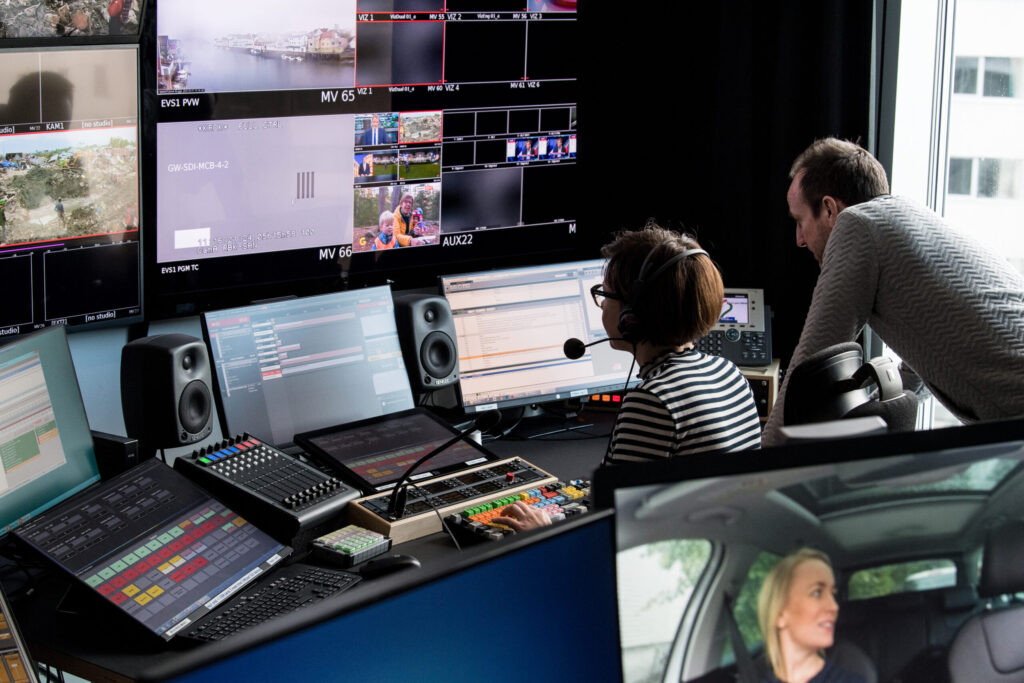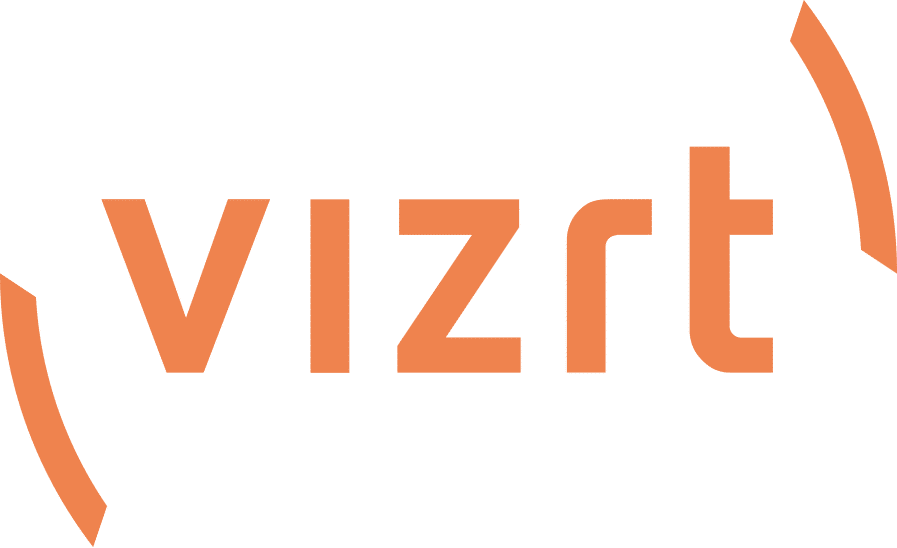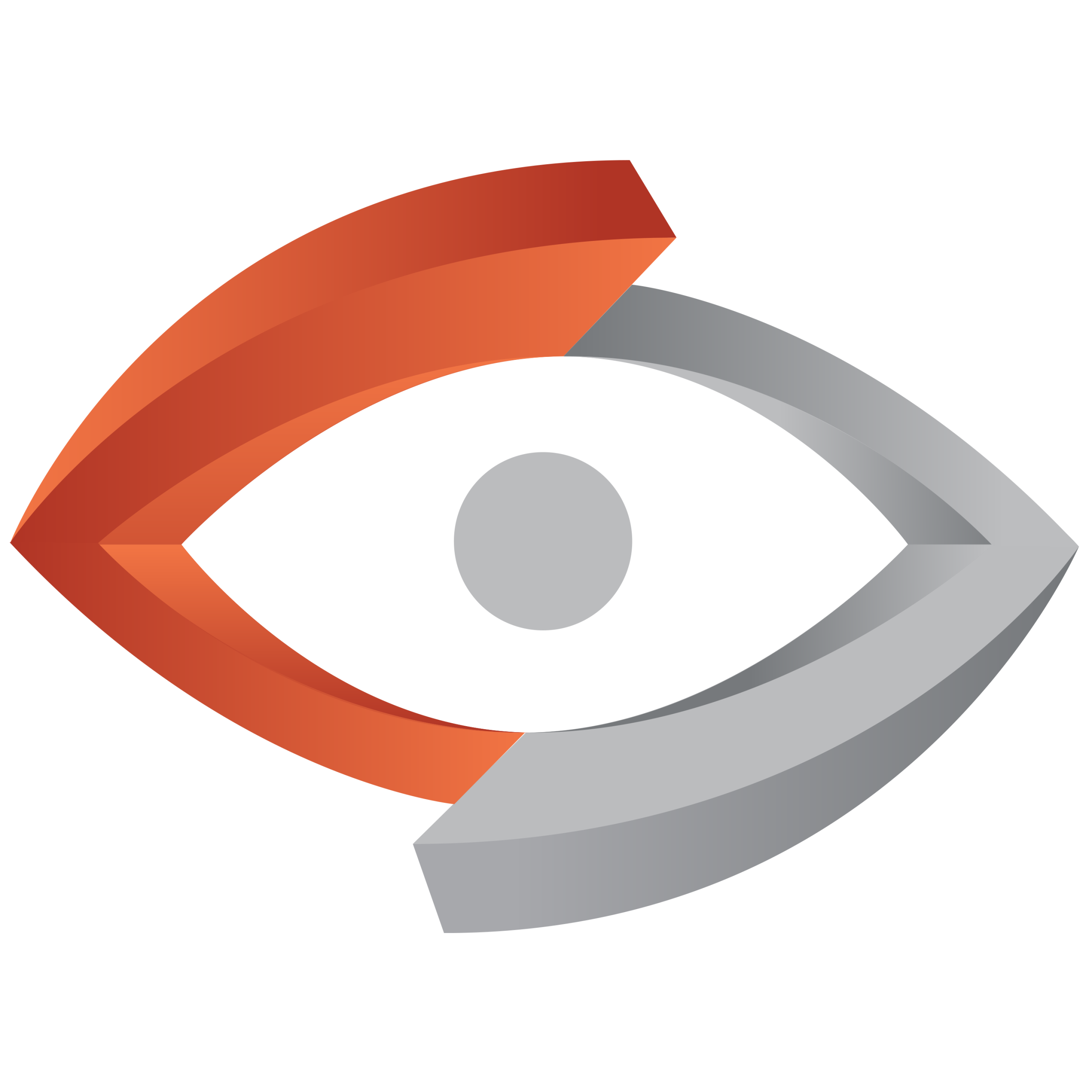Bringing live production closer to the storyteller
Summary
Over time, the shift from hardware constrained to software driven workflows in broadcasters has enabled a move from siloed environments to better integrated and more efficient workflows. Graphics creation, asset management, distribution and the majority of other departments have gone through software driven workflow revolutions.
While the control room and live production in general have improved vastly over the previous decades, the major shift to software driven workflows is nascent. Multiple specialized devices and very different operating interfaces are still used to create live content – and the control room, as a concept, looks much the same as it did 30, 40 or even 50 years ago.
How do broadcasters realise the benefits of software in their live production environments as well? Consolidation of functionality and an improved, uniform user experience and interface can not only improve overall efficiencies and flexibility, but will allow the production of live content to move closer to the storytellers – both physically and conceptually.

Same total audience, increased fragmentation, diminishing budgets
As viewing habits are changing, broadcasters are faced with many new and potentially disruptive challenges. The viewing public have very recently and very rapidly become used to expect access to a seemingly endless spectrum of extreme content variety and availability, and their viewing habits are still evolving. The audience shift to other platforms is a well-known fact of life for media producers today, where not only hardware devices including smartphones, tablets, smart watches, smart speakers, laptops, but also the number and kinds of media outlets, are in constant growth and constant flux. At the same time – while the global advertising spend has been growing steadily over the last decade1, this fragmentation means that this growth is not across the board, with traditional media being stagnant or even in decline, while online sees rapid growth. As an example, while still lucrative, Zenith agency forecasts the overall change in ad spend on TV in 2019-2021 will remain effectively pretty stagnant, while mobile internet will grow by a very substantial $90 billion2.
In this reality, any media producer is forced to compete in multiple spaces just to maintain viewership and income. This in turn creates a need to produce more live content in more versions, without being able to justify the traditional cost connected with building entirely new control rooms and production facilities.
From media industry to attention economy
For the last two decades, the media industry has increasingly become beholden to the attention economy. In our post- industrial society, according to Davenport and Beck “…attention has become a more valuable currency than the kind you store in bank accounts … [and it is] a highly perishable commodity. Once a moment’s attention is gone, it can never be brought back.”3 If you cannot capture the attention of your audience and hold on to it, they will leave and spend their attention elsewhere. Your output will simply become another part of the overall background noise of modern life.
While this attention deficit can, to a certain degree, be mitigated by being the loudest and most visible (i.e. through increased spend on advertising to draw audiences in), in a fragmented media landscape, the decibel level of the ambient cacophony makes it increasingly expensive to buy more amplification for your messages. In fact buying your way to a greater share of eyeball time is a game of diminishing returns; the louder you shout, the louder your competitors respond. To make matters worse you will have to cover more and more channels as you pursue your fast moving audiencces – and once you have caught up with your audience, they are likely to be fickle and you’ll have to fight the retention battle not only against similar offerings, but against everything from Youtube to Facebook and OTT providers.
The only way to sustainably compete in such an economy with such a fickle audience is to return to that over worn phrase “Content is King”, as argued at length by Bill Gates in his now-famous 1996 article about the future of the Internet. “For the Internet to thrive, content providers must be paid for their work.” , said Gates4. This is no different for any other delivery channel fed by the content industries. True value comes in the form of quality content, but quality content creation drives cost. Therefore it is essential to maximise that value, by targeting relevant, customized content to the right channel at the right time.
So – in order to be able to compete in this environment, producers need to be speed up their production, become more flexible and deliver tailored content to more destinations. And to achieve that, two major changes need to occur in the broadcast control rooms of the world: Production must become software based, and the traditional siloes between story creation and technical content production need to be torn down. It is simply not possible to work in a linear fashion and sequentially churn out enough content to fill all needed channels in a timely manner. While parts of the television production setup have adapted to this, there is arguably a laggard that offers room for massive – and low-hanging – improvements.
Distribution has gone from hardware to software – why not in production?
Over the last three decades the rise of the internet has caused physical, hardware-based distribution forms to transform into flexible and software defined ones. This shift has happened to large parts of a number of related industries; newspapers, radio and television have all adapted to the new world of multi-destination publishing.
In the same period, the shift from hardware constrained to software driven workflows in broadcasters has changed departments from operating in siloed environments to become better integrated and more efficient. However, we have yet to see this change truly take hold in the workflow of live production. Why does a control room look very similar today to what did 50 years ago – with a comparable crew performing similar roles?
Introducing software driven workflows to the control rooms of the media world is not only about changing from SDI to IP, CRT to LED, or from FPGA to GPU – it’s about understanding and using the unique benefits of software, and to adapt the way television is created in order to empower and enable content producers to create more quality content in a shorter time, with fewer on-air errors.

Cheap, but expensive – implementing tools that do not fit into the workflow
To find tools that fit into the workflow as well as solving the new problems of the broadcasters will be essential in the coming decade. Broadcasters are currently facing a need to be able to scale up and down the production, which leads to a need of fast set up, quick initialization and lower threshold for starting a live production. This flexibility can only be supported by a consistent workflow and unified interfaces for the whole production chain. It may be tempting to implement any tool that promises fast deployment and cost reduction using a software front end on a proprietary, non-flexible back end – at the expense of finding solutions that offer true integration with all major hardware vendors. A software based solution, deployable anywhere and controllable over network by anyone, allows the broadcaster to build radically different ways of working, in turn offering efficiencies and improvements.
In an environment where speed is essential and flexibility is everything, introducing non-compliant island technology, requiring complex, drawn out implementation and repeated specialist maintenance is likely to both slow down production flexibility and speed to air, as well as maintenance cost and training of staff.
Uniform and easy to use control interfaces are success critical
There are typically two approaches to driving the workflow changes in an organization; starting with the user facing frontend or starting with the engineering oriented backend. Changing the frontend is typically the most impactful change, because it can fundamentally change the way people work – and thus the quality and quantity of work performed. In many cases it can also be the most challenging to implement.
Broadcasters are therefore in need of simple to use, powerful, interfaces designed around and focused on the stories being told, with a back end that is flexible enough to fit into the organization. These interfaces should remove the need to focus on the individual device being controlled, status of the asset used or the communication with multiple specialists aligning a complex operation. It should focus on the shortest possible route between story creation and production. It should be simple to understand, and it should be easy to use in a high paced environment – for journalists and content creators themselves.
Having such a front end will in turn also allow broadcasters to gradually upgrade the interconnected parts of the production workflow at their own pace to match the new, software driven production reality. And if in this process the content creation processes of the broadcaster can remain undisturbed, all the better for revenue generation.
Re-monetization of content
Creating quality content is expensive. Creating content for multiple outputs can be difficult and time consuming. The number of minutes spent with major media has been stagnating over the last few years – with just 1 minute YoY increase for US adult media consumption over the last few years5. This means that – in the attention economy – the available attention that can be captured is now finite, and the only way to capture eyeballs for a larger proportion of said attention is to follow them to the channels where they can be found. With fragmentation of this sort and revenue streams in jeopardy, it is critical that media content producers are able not only to monetize but re-monetize content multiple times. Re-monetization is just that – produce once to create revenue in multiple instances.
By using software based systems that allow the creation of regionally targeted video content with targeted in-frame advertising or locally relevant graphics, or by producing for multiple output formats (again with adapted graphics and meta-information) at the same time without adding production time, or even by taking already produced content and easily adapting it to new formats, regions or other target audiences – broadcasters can use the same piece of content to make money several times without a matching rise in cost.
Consistent branding across all platforms key to be recognized and to maintain trust of viewers (even on mobile)
The drive to social media and online platform publishing has in many broadcasters created a dedicated social media team or department – typically operating with a separate toolset and creating an output that often varies from the that created in the “mainstream” channels.
For many media companies, viewers act as vectors of value. The more viewers and the longer the dwell time, the higher the value that can be extracted via ad revenue. The fifth Industrial Revolution (or post-industrial if you prefer) challenges this ethos. To thrive in this new market, where attention is hyper mobile, viewers must be seen not as vectors, unchanged by the act of the transmission of value, but as customers. They require fair reward for their attention and their data that may lead to the ability to unlock more of it. To engage with the audience, or customer, is to alter them, preferably in a manner that makes them more predisposed to respond to your stories in the future. This is why consistent branding of your content is crucial.
And in the current climate, one of the largest benefits broadcasters have over many new media players are strong brand names and the trust that comes with the brand. Being recognized in a unified way on all traditional and online platforms is a key success factor to maintain and leverage this trust to grab a larger slice of attention. Being able to deploy a consistent brand experience across all platforms, but without significantly increasing the work involved will be a key success factor for modern media houses.
Merging creation with production – a new way to produce stories
The evolution of software based production control means it is certainly possible – but no longer necessary – to dedicate a special room full of specialists in order to create world class content. By putting intuitive yet powerful control tools into the hands of the newsroom crew, or by moving the physical location of the producer from the control room to the middle of the newsroom, stories can be taken from idea to execution without delay.
If content is the most important driver of revenue for the broadcast community, it is only reasonable that human resources departments should be focused on developing content specialists, not technical specialists.
Serving content specialists requires choosing a production control tool that focuses on the content – one that is software based, agile and visual, in addition to what has been discussed above:
- A production control tool that is accessible over your network – anywhere
This lets the producer or journalist interact with and execute a live show from anywhere on the same or connected networks – allowing production to come closer to the point of story creation, improving communication between journalist and producer, and reducing time to air. - A production control tool that is based on standard, easily replicable IT components and not beholden to unique hardware locked to a physical location
Rather than having to set up a limited number of dedicated stations with hard to replace and maintain panels and devices, any computer on the network should be able to potentially interact with the control tool, enhancing the network based advantage above, and also adding increased redundancy by removing a single point of failure. - An interface with well organized, clear visual cues, with an interface that doubles as source control and multiviewer
Human beings are visual storytellers. From cave paintings to television production, the image and moving image have been the most powerful tools in our armory when we seek to communicate meaning. It does not make sense then, that producers – storytellers – are forced to work with non-intuitive interfaces with a lack of visual overview. Furthermore – live sources need to be available in the same interface both for reference and interaction. Enriching the view in this way puts the visual tools at the fingertips of the producer and removes the need for traditional monitor walls. - The knowledge that the solution chosen will continue to innovate and adapt to suit an industry in constant change.
Change is the new normal for media producers. In order to take the leap into software driven workflows, broadcasters should demand technical partners that work tirelessly to improve, update, integrate and adapt their control tools to whatever is the next killer production tech – without disturbing the content production in the process.
Tearing down the walls of the control room does not mean tearing down the control room itself. There is still a need to centralize the devices and workflows in some manner to ease access. However, it is absolutely necessary for broadcasters to open eyes wide to the possibilities inherent in software-based production control tools. And part of those possibilities is improving the connection between newsroom and control room, flexibility in production, adaptability to production scale requirements, and the simple ability to access and interact with the rundown of the day in a place the producer chooses to – not is forced to.
At Vizrt, we don’t know the future. But we know that, by working with, listening to and understanding content producers for over two decades, we are able to invent platforms that are future ready in the truest sense of the word. Starting with the creation of template-based graphics at our inception, we have been bringing the creative and production processes closer together with a long line of innovations of software defined visual storytelling tools ever since. The control room is the next natural step on this journey. And creating software powered rather than hardware constrained tools allows us to adapt our tools to where the need will be tomorrow, not where it was yesterday.
1 Guttmann, A (2020) at Statista.com Global Advertising Spending 2010-2019. https://www.statista.com/statistics/236943/global-advertising-spending/ Accessed 13.02.2020
2 Zenith Agency (2019) Advertising Expenditure Forecasts December 2019 published by Zenith Agency
3 Davenport, Thomas, and John Beck (2001:3) The Attention Economy: Understanding the New Currency of Business. Harvard Business School Press, Boston, USA
4 Gates, Bill (1996) Content is King (repost at Medium.com) https://medium.com/@HeathEvans/content-is-king-essay-by-bill-gates-1996-df74552f80d9
5 Dolliver, Mark (2019), eMarketer – report accessed 13-02-2020 https://www.emarketer.com/content/us-time-spent-with-media-2019




















